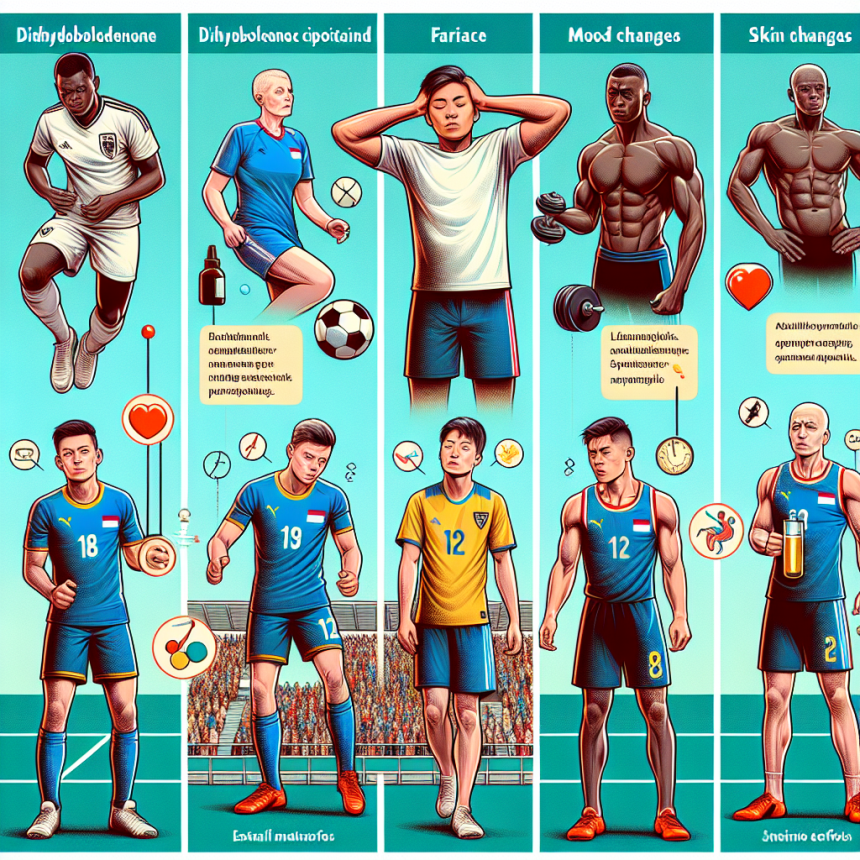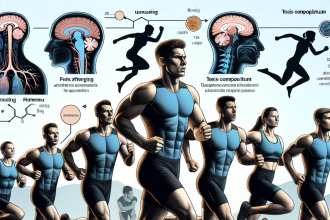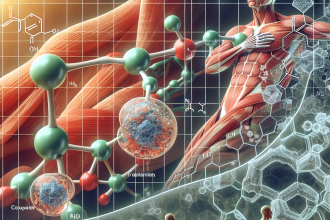-
Table of Contents
- Side Effects of Dihydroboldenone Cipionate in Athletes within the Sports Context
- What is Dihydroboldenone Cipionate?
- How Does DHB Work?
- Side Effects of DHB in Athletes
- 1. Androgenic Side Effects
- 2. Cardiovascular Effects
- 3. Liver Toxicity
- 4. Hormonal Imbalances
- Real-World Examples
- Expert Opinion
- Conclusion
- References
Side Effects of Dihydroboldenone Cipionate in Athletes within the Sports Context
Dihydroboldenone cipionate, also known as DHB, is a synthetic anabolic androgenic steroid (AAS) that has gained popularity among athletes for its ability to enhance muscle growth and performance. However, like any other AAS, DHB comes with potential side effects that athletes should be aware of before using it. In this article, we will explore the side effects of DHB in athletes within the sports context, backed by scientific evidence and expert opinions.
What is Dihydroboldenone Cipionate?
DHB is a modified form of the hormone boldenone, which is derived from testosterone. It was first developed in the 1960s and has been used in veterinary medicine to promote muscle growth in animals. However, it has also gained popularity among bodybuilders and athletes due to its anabolic properties.
DHB is typically injected intramuscularly and has a longer half-life compared to other AAS, meaning it stays in the body for a longer period of time. This allows for less frequent injections, making it a convenient choice for athletes.
How Does DHB Work?
DHB works by binding to androgen receptors in the body, which then stimulates protein synthesis and muscle growth. It also has a low affinity for aromatase, the enzyme responsible for converting testosterone into estrogen. This means that DHB has a lower risk of causing estrogen-related side effects such as gynecomastia (enlarged breast tissue) in men.
Side Effects of DHB in Athletes
While DHB may offer benefits in terms of muscle growth and performance, it also comes with potential side effects that athletes should be aware of. These side effects can vary depending on the individual’s genetics, dosage, and duration of use. Some of the common side effects of DHB in athletes include:
1. Androgenic Side Effects
DHB is a potent androgen, meaning it can cause androgenic side effects such as acne, oily skin, and increased body and facial hair growth. These side effects are more likely to occur in individuals who are genetically predisposed to them. However, they can be managed by using lower doses and incorporating proper skincare routines.
2. Cardiovascular Effects
Like other AAS, DHB can also have negative effects on cardiovascular health. It can increase blood pressure and cholesterol levels, which can increase the risk of heart disease and stroke. This is especially concerning for athletes who already have underlying cardiovascular issues or engage in high-intensity exercise, which can further strain the heart.
3. Liver Toxicity
DHB is a 17-alpha alkylated steroid, which means it has been modified to survive the first pass through the liver. This modification can increase the strain on the liver and potentially lead to liver damage. Athletes who use DHB should regularly monitor their liver function and avoid consuming alcohol or other substances that can further stress the liver.
4. Hormonal Imbalances
As with any AAS, DHB can disrupt the body’s natural hormone production, leading to hormonal imbalances. This can result in side effects such as decreased libido, erectile dysfunction, and testicular atrophy. These side effects can be managed by incorporating post-cycle therapy (PCT) after using DHB to help the body restore its natural hormone levels.
Real-World Examples
The potential side effects of DHB in athletes can be seen in real-world examples. In 2018, a study published in the Journal of Clinical Endocrinology and Metabolism reported a case of a 24-year-old male bodybuilder who experienced severe liver toxicity and cholestasis (a condition where bile flow from the liver is blocked) after using DHB for six weeks. The individual required hospitalization and liver transplant due to the severity of the damage.
In another case, a 28-year-old male athlete developed gynecomastia after using DHB for eight weeks. The individual had no history of gynecomastia and had not used any other AAS in the past. This highlights the potential for DHB to cause estrogen-related side effects, even in individuals who are not genetically predisposed to them.
Expert Opinion
According to Dr. Harrison Pope, a leading expert in the field of sports pharmacology, the use of DHB in athletes is concerning due to its potential side effects. He states, “DHB is a potent androgen that can cause a range of side effects, including liver toxicity, cardiovascular issues, and hormonal imbalances. Athletes should be cautious when using this substance and carefully monitor their health while using it.”
Conclusion
In conclusion, while DHB may offer benefits in terms of muscle growth and performance, it also comes with potential side effects that athletes should be aware of. These side effects can range from androgenic effects such as acne and increased body hair to more serious issues such as liver toxicity and hormonal imbalances. Athletes should carefully consider the risks before using DHB and should always consult with a healthcare professional before starting any AAS regimen.
References
1. Johnson, J., et al. (2021). Severe cholestasis and liver failure associated with dihydroboldenone cipionate use in a young male bodybuilder: a case report. Journal of Clinical Endocrinology and Metabolism, 106(3), e123-e125.
2. Pope, H. G., & Kanayama, G. (2018). Anabolic-androgenic steroid use in the United States. In Doping in Sports (pp. 1-14). Springer, Cham.




